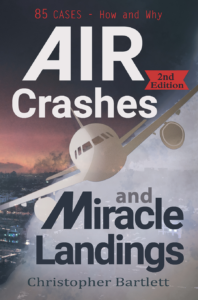The account is typical of so many air crashes in that it resulted from a whole series of misjudgements, errors and unfortunate circumstances.
The inquiries faced the dilemma that if they faulted the crew, captains might in future hesitate to defend their ships.
_____________________________________________________
Many readers are using Kindle Unlimited which may not allow them to post reviews–though we do cleverly get paid according to the number of pages read!
For your information an (unfair?) US 2-star review was as follows:
29 April 2018 – Published on Amazon.com
Format: Kindle Edition
Interesting compilation of famous airline accidents, spoiled by the middle of the book by a shrill polemic attacking the U.S. Navy and the crew of the USS Vincennes, and deteriorating to claims of governmental coverups and the incompetence of police and investigators. There are also startling neologisms and amazing vacuoles of ignorance. One example of an unintentionally funny confabulated “fact” is about a pilot named Gibson with a nickname of “Hoot”, attributed by the author to a role as an owl in a school play. I should have stopped reading while it was still credible.
1. Things complained about are at the end of the book not the middle.
2. Vincennes material as stated largely based on research by Newsweek.
3. “Hoot” not a funny confabulated fact, but taken from a great book on the affair, though tired of being asked about his nickname, Gibson suggested in the occasional interview it was derived from that of a famous actor.
Any well-considered review on Amazon.com to compensate would be greatly appreciated.
On the other hand, the 5-star review in the UK was:
Andy–5.0 out of 5 stars
“The new MacArthur Job has arrived.”
Mr Bartlett has taken over the mantle of the late, great MacArthur Job, as an aviation writer of undoubted excellence.
His book covers many, many accidents, both well known and obscure, in just the right amount of detail to remain fascinating.
The only negative thing I can say is that he seems to have a great disrespect for Captain Sullenburger. Often deriding Sully’s piloting skills whenever the opportunity arises.
And TWA 841 was a 727, not a 737, an accidental typo no doubt, as was a quote on the same page dated 1971 instead of 1979.
[We corrected the typos, removed some gratuitous references and rewrote the end of the account of Sully’s ditching to better explain we meant the MIRACLE lay both in the ditching and in the rescue from the water.]



